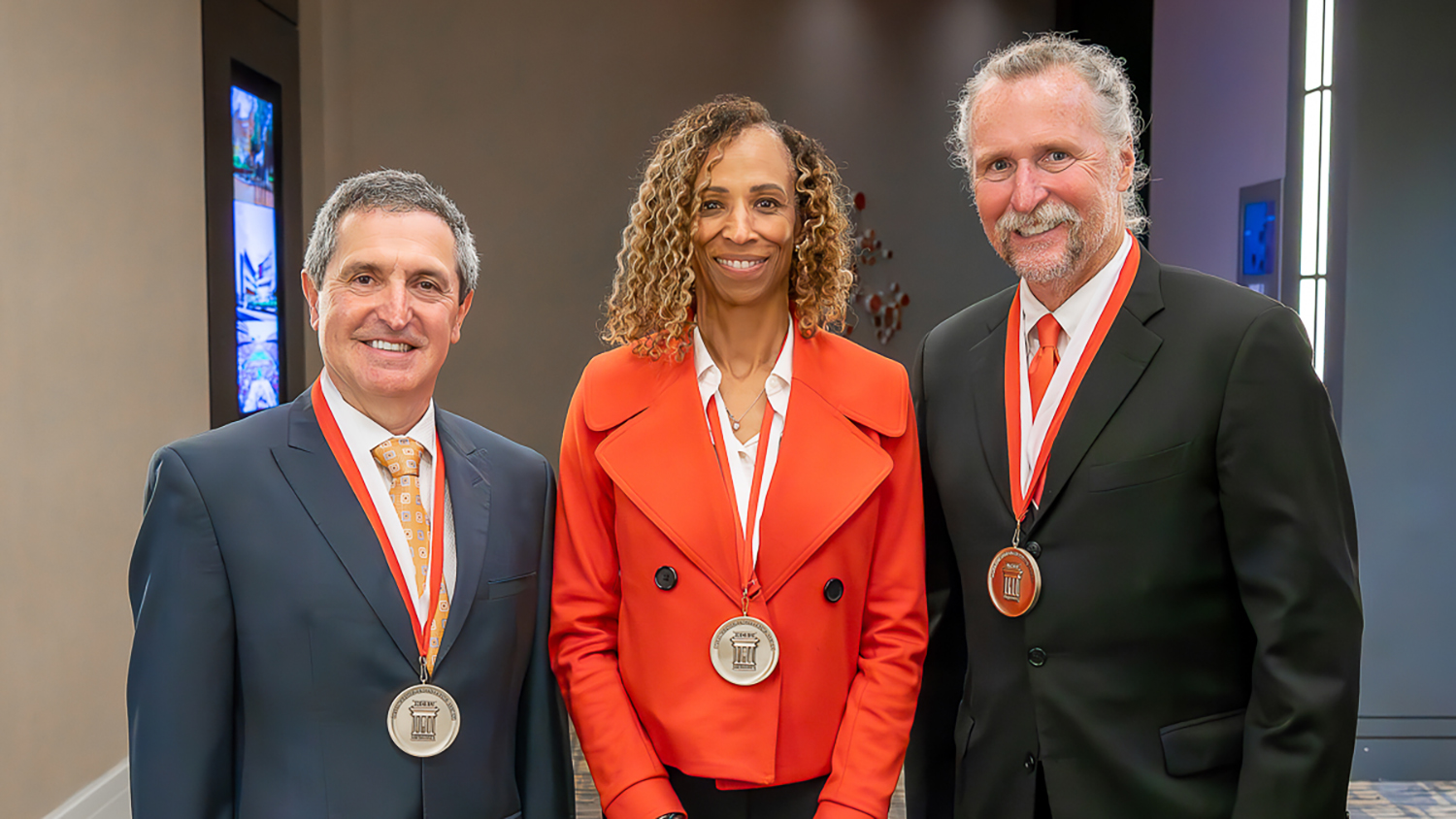Woolard led Apple, Inc. back from the brink

It’s hard to remember a time when Apple, Inc. was in trouble.
Now one of the world’s largest technology companies and a paragon of both form and function for millions of rabid fans, in 1996 the company was on its third CEO in three years. Apple’s stock price was flat, and its market share had shrunk to less than five percent of all personal computers sold.
 Today, Apple is among the world’s most popular brands, and its late co-founder Steve Jobs is remembered in movies and books as one of the great American visionaries of the last century and one of the country’s greatest business leaders. The fortunes of Jobs and Apple might have turned out much differently if not for the diligent work of an NC State engineering alumnus.
Today, Apple is among the world’s most popular brands, and its late co-founder Steve Jobs is remembered in movies and books as one of the great American visionaries of the last century and one of the country’s greatest business leaders. The fortunes of Jobs and Apple might have turned out much differently if not for the diligent work of an NC State engineering alumnus.
Ed Woolard, a 1956 industrial engineering graduate who had just retired as CEO of DuPont in 1995, was looking for a new challenge, and he found one when a friend suggested he take a position on Apple’s board of directors.
Besides his time leading DuPont as both CEO and chairman, Woolard had been a director for Citigroup, IBM and the New York Stock Exchange. Joining Apple’s board presented a different kind of challenge.
“When I went on the board, everybody said I was crazy because most analysts thought that Apple was history,” Woolard said.
Steve Jobs, Steve Wozniak and Ronald Wayne started Apple in 1976 to produce and sell personal computers. The company found success and a cult following for its Macintosh computer but went into a long decline when Jobs was fired as chairman in 1985.
Lacking Jobs’ vision, Apple moved into consumer products that weren’t successful. When Woolard joined the board, many experts believed that Apple had gotten too far away from its many strengths and was no longer a player in the personal computer market.
Woolard had one condition for taking over as board chairman: that he be given full access to the chief financial officer and to the human resources director.
The Washington, NC, native set out to learn as much as he could about Apple and CEO Gil Amelio’s plan to turn it around. Woolard went further than the average board member, visiting Apple’s headquarters in Cupertino, Calif. and meeting with employees at all levels.
The Decision to Change
Woolard found Amelio to be a capable leader but not the right fit for this company. It soon became apparent that his plan to turn Apple around would not be successful. Revenues were continuing to decline, stockholders were rebelling and key employees were leaving.
Woolard, using information he obtained from employees, convinced the board in 1997 that a change was needed to avoid a potential bankruptcy. As conversation turned to the search for a new CEO, one longtime board member suggested contacting Jobs about coming back.
After leaving Apple, Jobs had been involved with the computer animation studio Pixar and founded a new computer company called NeXT Inc., which Apple had purchased in 1997. After the sale of NeXT, Jobs was serving as an advisor for Amelio.
During a family trip to England to attend the Wimbledon tennis tournament, Woolard called Jobs, whom he had never met and had spoken to on the telephone only once, and asked him to return to the leadership of Apple.
Jobs had hard feelings about how his previous tenure at Apple had come to an end and put the blame on the board of directors at the time. He said he would not return as CEO or chairman but only as an advisor and would lead the company for a limited period of time. He would not accept a salary or even stock compensation.
He had one more unusual demand: that the entire board of directors, save for Woolard, resign immediately. Woolard convinced Jobs to let one other board member remain. The rest resigned and Jobs returned.
“I won’t say trying to get Steve to come back was a hard job,” Woolard said of that fateful phone call. “He wanted to come back, but he also played coy with me.”
The Road Back
Within a year Apple was on a solid footing. In less than three years, the stock price went to a record of more than $100 from a low of $12 and the total value of the company rose from $2 billion to $18 billion.
“Within six or nine months the stock tripled because people said ‘he’s back, and he’s going to fix it,’” Woolard said.
Woolard and Jobs worked together closely to bring Apple back, so much so that Woolard’s wife, Peggy, would joke that “your son’s on the phone” when she picked up a call at home and found Jobs on the other end of the line.
Jobs, who has been the subject of two movies and an exhaustive biography titled simply “Steve Jobs” since his death in 2011, sometimes had a reputation for being a difficult boss. Woolard found him to be extremely easy to work with and said Jobs seemed to be respectful of company employees.
Woolard, a longtime supporter of the College who was named a Distinguished Engineering Alumnus by the College in 1988 and received the Watauga Medal from the university in 2001, deflects any praise for his role in saving Apple, saying only that he was in the right place at the right time to help bring about the change the company needed.
“I was extremely pleased and proud to have helped Steve Jobs build a strong board, talented management team and a great company,” Woolard said. “It was exciting, terrific fun and resulted in an outstanding business success story.”
Return to contents or download the Spring/Summer 2016 NC State Engineering magazine (PDF, 3MB).
- Categories:


